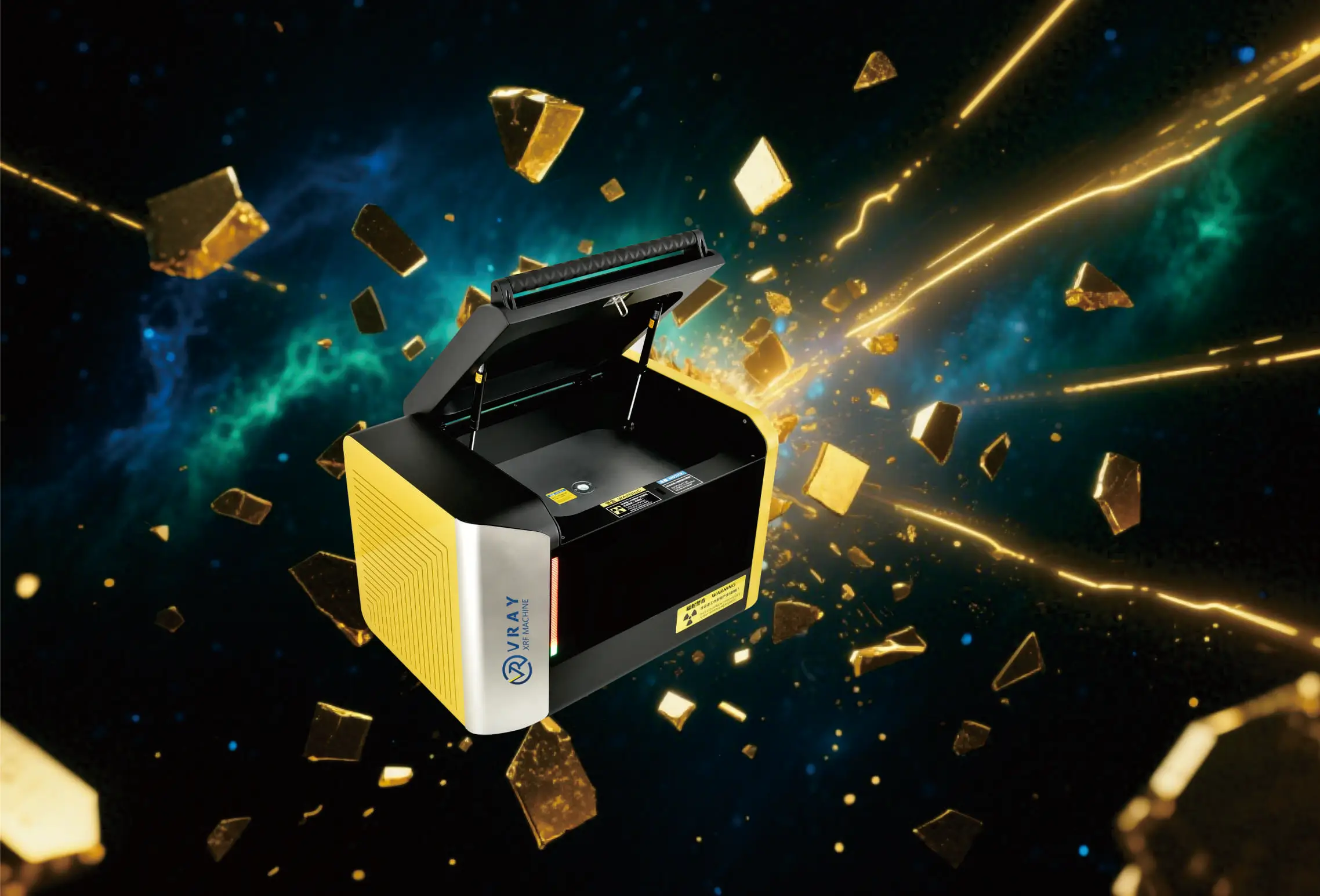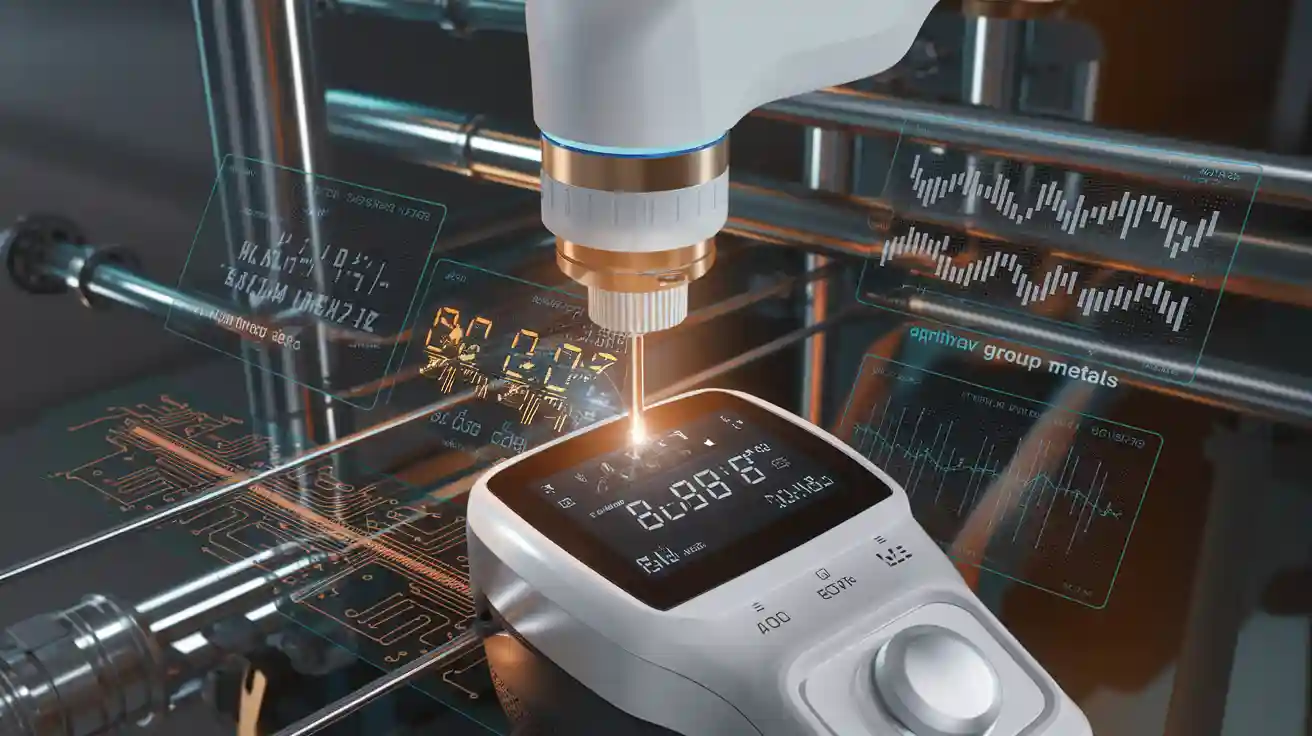
Accuracy in XRF analysis is crucial for obtaining reliable results, especially when using a high precision XRF Gold Analysator. This technology plays a significant role in both scientific and industrial applications. Detection limits can range from 1 ppm zu 100%, highlighting the need for meticulousness when identifying elements such as sodium or uranium. Errors in XRF analysis, such as uneven samples, can lead to mislabeling bis 60% of quality samples as waste. This not only wastes resources but also results in poor decision-making. By utilizing tools like a high precision RFA gold analyzer correctly, we can minimize errors and achieve better results, ultimately saving money and facilitating smarter choices.
Key Takeaways
Getting samples ready the right way is important. Mix them well and keep particle sizes the same to avoid mistakes in XRF testing.
Calibrating your XRF tool often is very important. Check it regularly to get correct readings and trustworthy results.
How long you measure affects accuracy. For mixed samples, take several readings to find differences and get better data.
Taking care of your XRF tool stops problems. Clean it and update its software often to keep it working well.
Training the person using the tool is key. Skilled users make fewer errors and get better results by handling it properly and reading data correctly.
Understanding Errors in RFA-Analyse

Improper Sample Preparation
Preparing samples correctly is very important in RFA-Analyse. Skipping this step or doing it wrong makes results unreliable. Over-concentrated samples absorb too many X-rays, showing lower element amounts than they really have. Under-concentrated samples give weak signals, making it hard to measure small elements. Contamination during grinding or mixing can add unwanted elements, which may change the results and cause wrong conclusions.
Studies show bad sample preparation can cause errors over 100%. Things like press pressure and particle size affect accuracy a lot. Odd sample shapes or wrong placement during testing also lead to mistakes. These problems show why following proper preparation steps is key for good results.
Tipp: Make sure your samples are mixed evenly and clean. Use the right grinding tools and keep particle sizes the same to lower errors in RFA-Analyse.
Incorrect Calibration of the Instrument
Calibration makes sure your XRF instrument gives correct measurements. Ohne es, the machine might show wrong numbers, leading to bad decisions. Zum Beispiel, mistakes in calibration standards can cause big errors in measuring concentrations.
Wichtigste Erkenntnisse | Beschreibung |
|---|---|
Accuracy Impact | Calibration affects how correct XRF measurements are. |
Calibration Challenges | Problems like bad sampling pulp cause measurement mistakes. |
Economic Implications | Good calibration helps industries save money and work better. |
To fix these problems, build calibration curves carefully and use math models to handle matrix effects. Check your instrument’s calibration often to keep it accurate over time.
Notiz: Calibration isn’t done just once. Regular checks and fixes are needed to keep RFA-Analyse zuverlässig.
Insufficient Measurement Time
How long you measure affects the quality of your RFA-Analyse. Short times often make data scattered, making it hard to find some elements. For mixed samples, not enough readings can miss important differences, causing wrong results.
Product Type | Notes on Heterogeneity | |
|---|---|---|
Ground Spices | Single Reading | Expected to be homogenous |
Paint Samples | Single Reading | Expected to be homogenous |
Toys and Ceramics | 3 to 5 Readings | High potential for heterogeneity |
Metal Foodware | 3 to 5 Readings | Components may vary significantly |
Zum Beispiel, testing toys or ceramics with one reading might miss changes in their makeup. Taking more readings helps find these differences and makes results better.
Tipp: Think about your sample type when choosing measurement time. For mixed materials, take multiple readings to get accurate data.
Neglecting Instrument Maintenance
Taking care of your XRF instrument is very important. Dust and worn parts can make it work poorly. Zum Beispiel, a dirty X-ray tube can block signals. This can cause wrong readings and bad results over time.
Not replacing parts like filters or sample cups can also be a problem. These parts wear out and might add dirt if not changed. Auch, skipping software updates can hurt accuracy. Old software may miss important fixes or features.
Tipp: Make a plan to clean and update your machine. Replace worn parts and keep software current for better results.
Misinterpretation of Results
Understanding XRF data needs knowing what the machine can and can’t do. Reading results wrong can lead to bad choices. Zum Beispiel, not considering matrix effects can change element amounts.
Studies show how mistakes happen. One study found errors from bad methods. Another showed big differences in results for copper objects. These examples show why careful data checks are needed.
Studientitel | Wichtigste Erkenntnisse |
|---|---|
The Curse of the pXRF | Bad methods can cause wrong RFA-Analyse Ergebnisse. |
Comparative Analysis of Copper-Based Objects | Big result differences show the risk of reading data wrong. |
To avoid mistakes, always double-check your results. Use standards or expert help to make sure your findings are correct.
Ignoring Spectral Interferences
Spectral interferences happen when element signals overlap in the spectrum. This makes it hard to tell elements apart. Zum Beispiel, iron can hide manganese because their signals mix.
Ignoring these overlaps can give wrong measurements. Special software can help fix these problems. Better detectors can also separate signals more clearly.
Notiz: Always check your spectra for overlaps. Use tools to fix them and get accurate results.
Best Practices to Avoid Errors in XRF Analysis
Effective Sample Preparation Techniques
Good sample preparation is key for accurate RFA-Analyse. Preparing samples the right way reduces errors and gives better results. Clean and uniform samples help avoid problems during testing.
Follow these simple steps:
Mix samples well: Make sure elements are spread evenly.
Keep particle sizes the same: Grind samples to a consistent size.
Avoid dirt: Use clean tools and spaces to stop contamination.
Use the right binder amount: Keep binder-to-sample ratios steady.
Tipp: Changes in sample weight or binder ratio can cause mistakes. Always use the same preparation steps to avoid errors.
Reports show bad preparation causes more errors than random mistakes. By following these steps, you can get reliable and repeatable results in your RFA-Analyse.
Regular Calibration and Verification
Calibration keeps your XRF instrument Genau. It matches the machine’s readings to known standards. Ohne es, results can be wrong, leading to bad decisions.
Regular calibration adjusts the machine to measure elements correctly. It also fixes errors caused by wear or the environment. Wartung, like checking parts and updating software, keeps the machine working well.
Notiz: Trained technicians should do regular maintenance. This helps meet quality rules and keeps results trustworthy.
Skipping calibration can lead to expensive mistakes, especially in industries needing precision. Checking your machine often ensures accurate results and protects your RFA-Analyse.
Ensuring Adequate Measurement Time
How long you measure affects your RFA-Analyse Ergebnisse. Short times can miss small elements or give scattered data. Longer times improve accuracy but depend on the sample type.
For mixed samples, take several readings to find differences. Zum Beispiel, one reading of toys or ceramics might miss important details. More readings or longer times make results more reliable.
Probentyp | Suggested Measurement Approach | Accuracy Notes |
|---|---|---|
Same Material | One Reading | Zuverlässige Ergebnisse |
Mixed Materials | 3-5 Readings | Finds differences |
Tipp: Match measurement time to your sample type. For mixed materials, take more readings to avoid mistakes in RFA-Analyse.
Studies show longer times increase element counts but don’t always improve accuracy. Adjust both time and settings for the best results.
Routine Instrument Maintenance
Taking care of your XRF instrument keeps it working well. Skipping maintenance can cause problems, like bad data or broken parts. Dust and worn-out pieces can stop the machine from finding elements correctly.
Here’s how to maintain your instrument:
Clean the X-ray tube and detector often. Dust can block signals and mess up results.
Check and replace parts like filters and sample cups. Old parts can cause mistakes or add dirt.
Update the software regularly. Updates fix bugs and improve accuracy.
Get professional servicing. Experts can find hidden problems and fix them.
Tipp: Make a schedule for cleaning and repairs. Regular care helps your machine last longer and work better.
By keeping up with maintenance, you lower the chance of mistakes and get more reliable data from your RFA-Analyse.
Operator Training and Education
Even the best XRF instruments need skilled users for good results. Without training, users might make mistakes or use the machine wrong.
Training helps in many ways:
Learn how to use the machine: Operators can set it up and read results correctly.
Fewer mistakes: Trained users are better at preparing samples and checking data.
Fix problems faster: Skilled workers can spot and solve issues quickly.
Offer classes or online lessons to teach your team new skills. Encourage them to learn about updates in RFA-Technologie.
Notiz: A trained operator is key to avoiding errors. Their knowledge ensures accurate results every time.
Following Safety Protocols
Safety rules protect you and improve your RFA-Analyse. These machines use radiation, so following safety steps is very important.
Important safety tips:
Wear safety gear: Use gloves, Brille, and lab coats to stay safe.
Follow radiation rules: Stay at a safe distance and use shields.
Control the environment: Keep the area free of heat, Feuchtigkeit, or shaking.
Use certified materials: These help check your results for accuracy.
Reminder: Safety isn’t just about rules. It also helps keep your tests steady and reliable.
By following safety steps, you create a safer workspace and reduce errors in your RFA-Analyse.
Advanced Strategies for Reducing Errors in XRF Analysis
Fixing Spectral Overlaps
Spectral overlaps happen when signals from different elements mix. This makes it hard to tell elements apart. Special software can separate these mixed signals using math tools. These tools help improve your analysis accuracy.
Upgrading your detector is another good option. High-resolution detectors, wie Silizium -Drift -DetektorS (SDDs), can better separate close signals. This lowers the chance of mistakes. Always check your spectra for overlaps. Fixing them early gives more reliable results.
Tipp: Update your software often and think about getting high-resolution detectors to reduce spectral overlaps.
Choosing the Right Mode for Your Work
Modern XRF instruments have different modes, like energy-dispersive (Edxrf) and wavelength-dispersive (Wdxrf). Each mode works best for certain tasks. EDXRF is faster and good for checking many samples quickly. WDXRF gives clearer results for complex materials.
Pick the mode that fits your needs. Zum Beispiel, WDXRF is great for materials with mixed signals, like alloys or rocks. EDXRF works well for quick checks in factories. Using the right mode improves both speed and accuracy.
Notiz: Learn what your machine can do to pick the best mode for each test.
Adjusting Measurement Settings
Changing measurement settings can make your data better. Things like energy levels, filter type, and time affect your results. Zum Beispiel, researchers studying phosphate slurry used energy levels of 20 kV and 25 kV with a 60-second test time. This lowered errors to just 0.38%.
Using the right filter also helps. A study on chromium contamination used a copper filter that was 100–140 μm thick. This improved signal clarity and found contamination as low as 0.32 mg/L. Such precision meets strict environmental rules.
Tipp: Try different settings to find the best setup for your sample type.
Leveraging Advanced Software Tools
Advanced software tools help make RFA-Analyse more accurate and faster. These tools fix mistakes, process data, and improve results. Zum Beispiel, spectral deconvolution software separates mixed signals to identify elements correctly.
Studies show portable XRF instruments with advanced software give better results. In field tests, these tools quickly find important areas with good accuracy. In Labors, they improve precision even more, connecting field tests to lab methods. This mix helps get reliable results in many settings.
Tipp: Update your software often to use new features and meet industry standards.
Cross-Validating Results with Other Analytical Techniques
Using other methods with RFA-Analyse makes results more reliable. Cross-checking ensures findings are correct, especially for tricky samples.
Zum Beispiel, Laser-Induced Breakdown Spectroscopy (LIBS) works well with RFA. LIBS gives quick data, while RFA provides detailed measurements. In medicine, this pairing works great. One study found LIBS spotted iron quickly, Und RFA confirmed its exact amount. This method also helps check solvent purity and find contamination.
Combining techniques saves time and improves accuracy. Each method fixes the other’s weak points, giving clearer results.
Notiz: Use methods like LIBS or ICP-MS with RFA to get better and more reliable data.
Staying Updated on Industry Standards and Innovations
Learning about new RFA-Technologie helps you stay ahead and get better results. Reports show Micro-XRF analyzers now have better detectors and resolution. These upgrades make RFA-Analyse faster and more reliable.
Report Title | Beschreibung |
|---|---|
Micro-RFA-Analysator Market Growth Analysis, Market Dynamics, Key Players and Innovations, Outlook and Forecast 2025-2031 | Shows trends in production, pricing, and new tools for better analysis. |
Other updates include automatic sample handling and smarter data tools. These features make work easier and reduce mistakes. Staying informed lets you use the best tools and methods for your tests.
Reminder: Read industry news and go to events to learn about new trends in RFA-Analyse.
Reducing mistakes in XRF analysis helps get accurate results. Good preparation, regular checks, and smart methods are key to success.
Looking at XRF data as element amounts can cause errors. Using element ratios instead makes results more accurate.
Comparing data between labs and rock types is easier with clear numbers. This makes XRF more useful.
Was es tut | Why It Matters | |
|---|---|---|
Ordinary Least-Squares (OLS) | Creates a straight-line link between methods | Common but misses some errors |
Weighted Ordinary Least-Squares (WOLS) | Fixes errors on one side of the data | Makes results better |
Weighted Least-Squares (WLS) | Fixes errors on both sides of the data | Most accurate method |
Learning new skills and following smart steps helps you get better and repeatable results every time.
FAQ
What is the most common mistake in XRF analysis?
The biggest mistake is bad sample preparation. Dirty, uneven, or poorly mixed samples can give wrong results. Always clean and mix samples well, keeping sizes the same.
How often should I calibrate my XRF instrument?
Calibrate your XRF -Maschine often, ideally before each use. Regular calibration keeps results accurate and fixes changes from wear or the environment.
Can XRF detect all elements in a sample?
NEIN, XRF cannot find very light elements like sodium or smaller. For these, use other tools like ICP-MS or LIBS for better results.
Why does measurement time matter in XRF analysis?
Short times can miss details or give messy data. Longer times make signals clearer and results more accurate, especially for mixed samples. Adjust time based on what you’re testing.
How can I reduce spectral interferences?
Use special software or better detectors like silicon drift detectors (SDDs). These tools separate mixed signals, helping you identify elements more accurately.







WhatsApp
Scannen Sie den QR-Code, um einen WhatsApp-Chat mit uns zu starten.